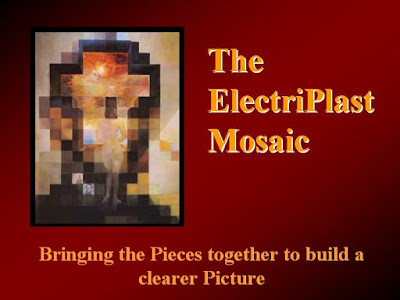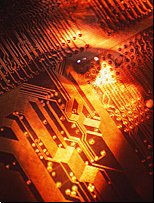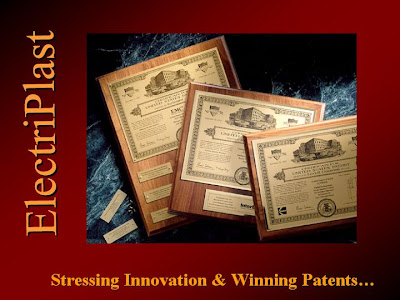 A Mosaic
A Mosaic
PersuasionBy PK
ElectriPlast Blog PublisherWhat you Know vs. What is Unknown.Recently, the EB’s Editor-and-Chief, Vince, posted some thoughts surrounding the question of this investment in terms of building a mosaic.
In a side conversation I told him that I had considered submitting a similar article, especially after exchanging a response to comments posted by a few EB Readers a week or so ago when they questioned why it was so quiet and wanted to know the status on where the company and we stakeholders stood? More to the point, I noted that the article I had in mind should be inclusive to all Blog Readers looking to this site as a source of value added insight, especially during this quiet spell. The focus being to address the questions some may have as they wonder at the momentum lost over the past few months.
Suffice it to note, what has occurred, and what is happening at present, may look like a number of disparate events taking place without rhyme or reason. Without a scorecard, we, the shareholders, are left wondering at the larger picture. That is the problem we face with the silence coming from the principles, but it is also a potential solution, allowing a breather to reassess some of the reasons for the current angst felt among some of those very same investors.
First – what you know is what is real. That is to say, over the past year, those investing in this speculative venture have done their Due Diligence to support the comments made both within this Blog and by sources elsewhere. Investor’s have verified this Due Diligence through independent sources, SEC reports, press releases, and company contacts. So, when I note that things have happened; awards have been garnered; licenses & contracts have been signed; agreements made; patents were submitted, issued and awarded; and that production of ElectriPlast IP material is underway – believe it when I write that these things are real.
Second – what you do not yet know is not always bad. Simply put, Integral and the management at JARCO see vast potential surrounding the introduction of the ElectriPlast IP (and its broad horizon of uses and abilities) to the market at large. The silence sensed is partially due to IP protection concerns. This is not to make an excuse, but I do want all reading to simply understand that all of the patents have not yet been awarded—as a matter of fact, a few “key” patents are--even now--in the pipeline, and are due to emerge any day now. This is a lynchpin situation because these few critical patents may well end up determining the level of control that Integral and JARCO will maintain on the ElectriPlast IP, and possibly—speaking on a broader front—the range of control and extensive impact these pending patents may have on the whole of the Inherently Conductive Plastic and like material’s market. In short, the impact and potential at hand could very well be overwhelming.
Third – you may not realize the importance of what you know already. This follows up on highlights presented in this Blog, and which might be worth taking a second gander at. One glaring issue of import centers on the time when Jasper first came on the scene. Some reading might remember my making a “thing” about this ISO certification that JARCO holds.
- Taking that a step further, let’s say—for a day—you were the one running a company which needed materials for your product components, and have two choices before you:
a.) To acquire the materials you needed on the cheap; or
b.) To go through established lanes and purchase the material from a known and certified manufacture—Which option would you go for?
- This question is a set-up to a true-life sceario, based on the story of the Dell computer company from a few years back. As with most industry leaders, the leadership of the Dell computer company is aggressive, and is constantly looking to get that extra competitive edge over others in their market. In this zeal of competition, they discovered that some obscure company in Taiwan, or somewhere thereabouts, was selling much sought-after capacitors at rock-bottom prices. Seeing an opportunity in the making, Dell’s leadership jumped on this bargain and purchased these capacitors in volume. Shortly thereafter, they took steps to began incorporating those same capacitors into their mainstream product-lines.
- Now the rest of this story could be the basis of a 1994 movie featuring Michael Douglas and Demi Moore called: “Disclosure” (except without the sex and intrigue). The running theme being, that the faulty capacitors purchased were of such poor quality, they ended up having a meltdown in thousands of computers after only a few months of use—and many more over time. The knock-off effect of this meltdown ended up costing the Dell computer company major money (somewhere in the neighborhood of almost 500 million dollars worth of settlement revenue). Another result of the fallout over this misstep was in the serious damage caused to the company’s reputation—damage so extensive, that to this day, they are still trying to recover—and all this simply because of an effort to save a few bucks and cut costs, by skirting a standard product certification process and opting instead to purchase untested capacitors from an unknown and uncertified manufacture/supplier.
- Now to bring this back to where we started. JARCO is a company that is known and is internationally acknowledged as a company that meets or exceeds ISO certified standards. The ElectriPlast IP is undergoing--or has undergone--the ISO certification process (this is one of the reasons behind the rumored 3rd party testing of the ElectriPlast materials). For JARCO to maintain their ISO accreditation, ElectriPlast too has to pass, or surpass these exacting standards. In doing so, ISO certification will yet again validate potentials surrounding the ElectriPlast IP, and will reduce even more the risk that we as early shareholders undertook when we first jumped onboard this speculative investment. Further, it will serve to grant assurances to those companies presently sitting on the fence, waiting to either invest in, or purchase ElectriPlast IP products or materials.
- So, back to the scenario question…you as the one running this company—for the day—have a choice. You can give the nod to JARCO (because of multi-pronged internal tests conducted through your R&D; based on JARCO’s ISO accreditation; and due to the independent 3rd party testing conducted on the ElectriPlast IP material) to fill your material requirements—or you can take the potentially more costly path as noted in the Dell scenario, and risk a decision that might end up biting you & your company in the butt? Life is full of choices, but wisdom doesn’t really have to cost 500 million dollars.
Fourth – to wind this down and keep it from becoming novel-esque...I’ll just note that though there are a number of current events not widely known or shared, possibly because of IP protection/security concerns. Just because events are taking place behind the scenes, that does not hinder the fact that they are indeed occurring.
The Mosaic-effect.When the pieces are cobbled together, merging all that is already known, the miriad of disparate issues and events might look like a blob when placed on a white canvas, but take a few paces back and like with a mosaic, the picture slowly begins to emerge.
Looking at this investment from a mosaic perspective, I can give credit to Vince’s earlier posting which touched on the past happenings, in conjunction with the behind the scene events taking place at present, all of which will ultimately have a staggering impact this investment’s future.
The content below represent extracts from Vince’s Internet postings*:"…Bellingham has been too quiet for too long. If this is truly "our year," there are simply too many things that need to happen before too many quarters (Q2 starts this Sunday) go by.
For example*:
(a.) What is the status of the Heatron, JARCO, ADAC, Esprit and Knowles licensing agreements? Have they been sitting on their hands or have they been hustling to develop ElectriPlast products to satisfy their various customers in the LED lighting, automotive, aviation and electronic acoustics sectors?
(b.) Where, in the developmental process, are those "several hundred" non-disclosure agreements that impact virtually every sector that we have heard so much about?
(c.) How close are we to hearing about the results of the independent third party testing?
(d.) Is JARCO, already an ISO-certified supplier, waiting for these results before "scrambling" their ace salespeople?
(e.) When are we going to hear about the 19 or so long overdue patents that were mentioned (q.v. Integral PR dated 07/25/06) as having been filed by September 2004, with an approval cycle expectancy 18 months to two years?
These items represent a massive logjam of positive news, anyone of which could send us into orbit, but none faster than favorable results from the independent third party testing. Everything will flow from that. All those company names we have used to create the "mosaic" in years past, will begin to become realities."









